Stockbridge students build a hoop house for a better future
by Joan Tucker
Bob Richards, a veteran teacher of 22 years, continues to inspire his Agricultural, Construction, and Future Farmers of America (FFA) students with active learning. Their latest endeavor is building a hoop house that will grow cool-weather plants. Nitty Hoops, a fabrication company in Ann Arbor, Michigan, provided the materials and instructions.
On August 22, Stockbridge Community News was on hand to observe as Stockbridge High School students began constructing the hoop house. According to John Becker, the construction lead, building it generally takes two days. Under the direction of Becker and Richards, students arranged poles in a crisscross manner to build the frame. Other students applied plastic on the sides and installed electrical boxes and black irrigation tubing on top of the metal framing.
After upper preparation is finished, the top frame will also be covered in plastic. Then a second layer will be added covering the entire hoop house with air space in between to provide insulation. At a later date, when vegetable beds are in place, a drip-irrigation system will be installed.
During construction, journalism and English students also interviewed the crew and observed the process. Photography students recorded every step of the construction. Fifteen-year-old Jacob Broesamle, who already has his private pilot’s license, was on hand to fly a drone above the area to capture pictures from above.
According to Bob Richards, “The hoop house is a big project. The building part is easy, but to get leafy vegetables to grow in Michigan throughout cool and cold weather without a furnace will be the challenge.”
Richards also hopes students will conduct experiments with different seed types—both pelletized (coated) and unpelletized.
Rissa Petiprin, a student teacher working with Richards, is studying agricultural science at Michigan State University and is excited about this project and the teaching opportunity. She will be assisting Richards in teaching his agriculture classes and helping with the FFA program.
“Students learn best when they have autonomy and are connected to the project,” Petiprin stated.
Leafy greens, lettuce, spinach, and kale grown in the hoop house will be given to the school kitchen to be used in lunches. Carrots, beets, and snow peas are other cool-weather plants students also plan to grow.
Richards learned about this hoop house grant opportunity while attending The Fall Agriculture Teacher Professional Development Institute, which was held in conjunction with Michigan FFA’s Fall Leadership Conference last year. He wasted no time and went to work filling out the grant application.
The 61-S Grant of $48,000 was awarded by the State of Michigan. To qualify, the school had to have an Ag program and an FFA group. The grant money will be used for construction materials, getting water and electricity sourced to the hoop house, extra insulation surrounding plants in the winter, seeds and gardening tools, and a small furnace if necessary.
As the excitement of the hoop house construction wears down, students, under the direction of their teachers, will begin to study the layout for bed construction to plant and grow food.
Constructing the hoop house is already turning into a rewarding project; looking forward to eating school-grown vegetables for lunch will be the icing on the cake.
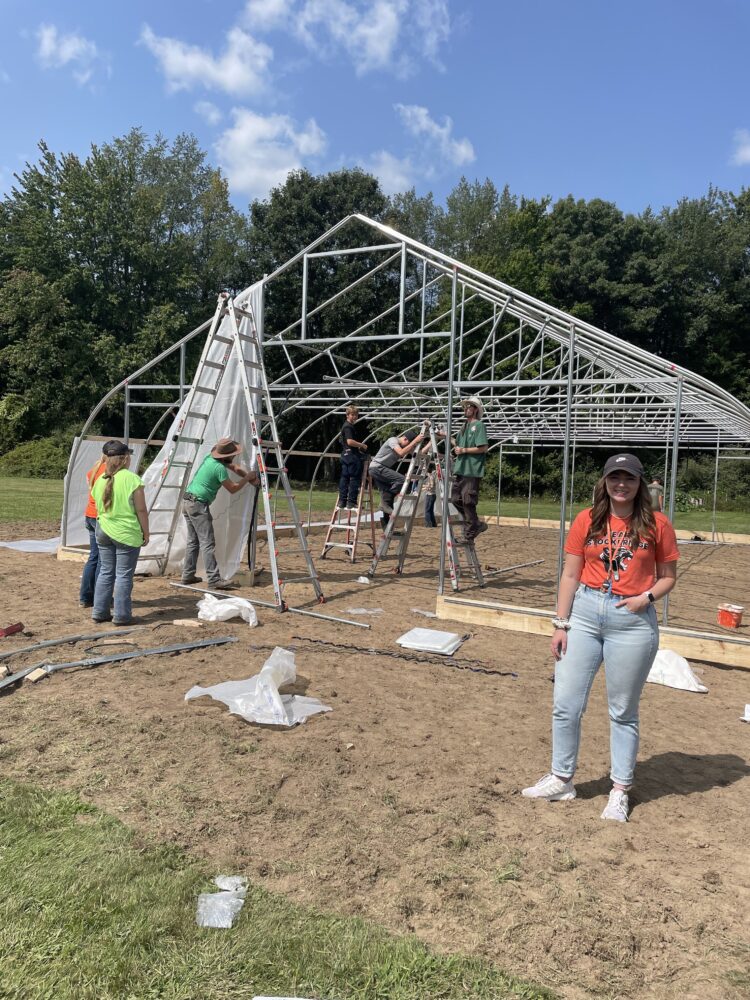
Student teacher Rissa Petiprin (foreground) is on hand to observe and assist where needed. Photo credit: Joan Tucker
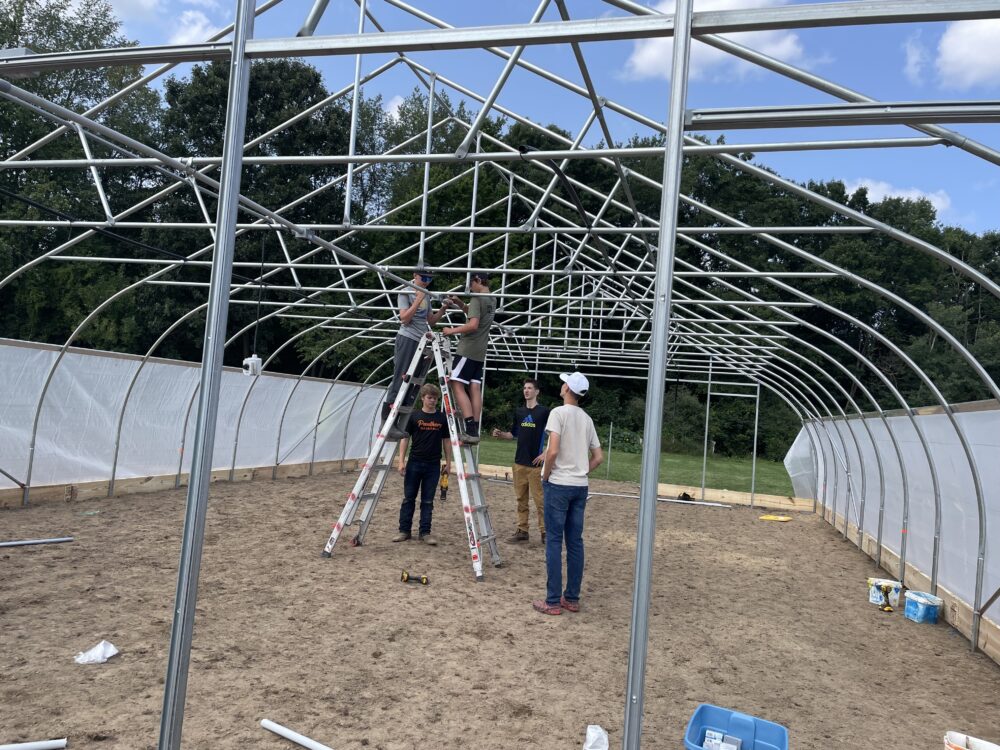
Agricultural, Construction, and FFA students installing the frame for the hoop house. Photo credit: Joan Tucker
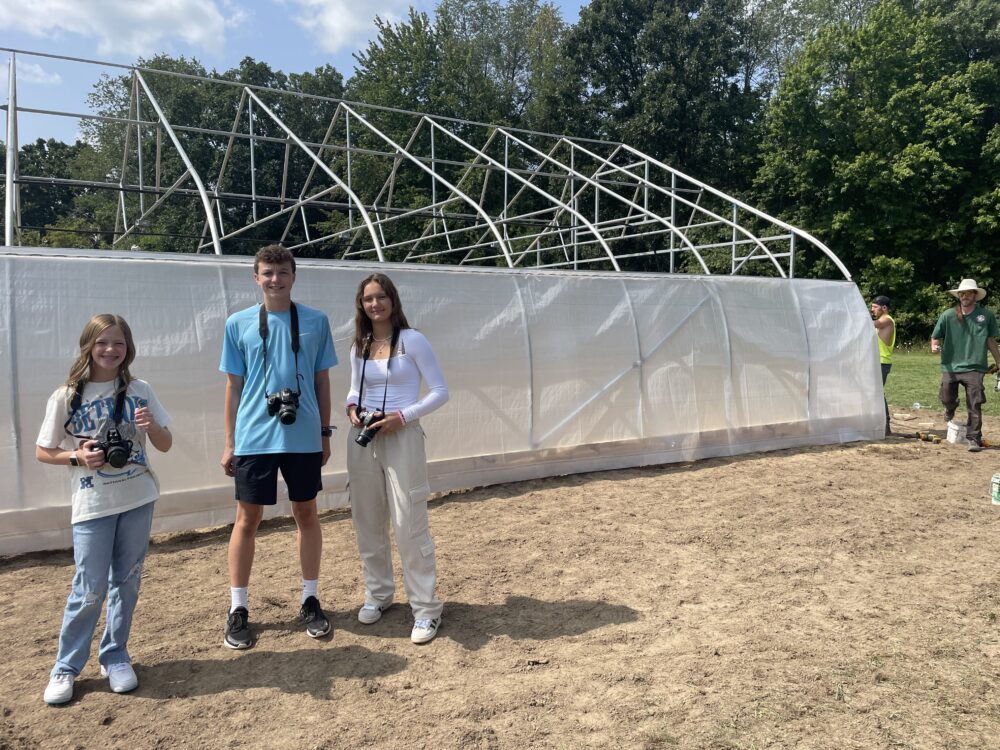
Student photographers are on hand to document the hoop house progress. Photo credit: Joan Tucker
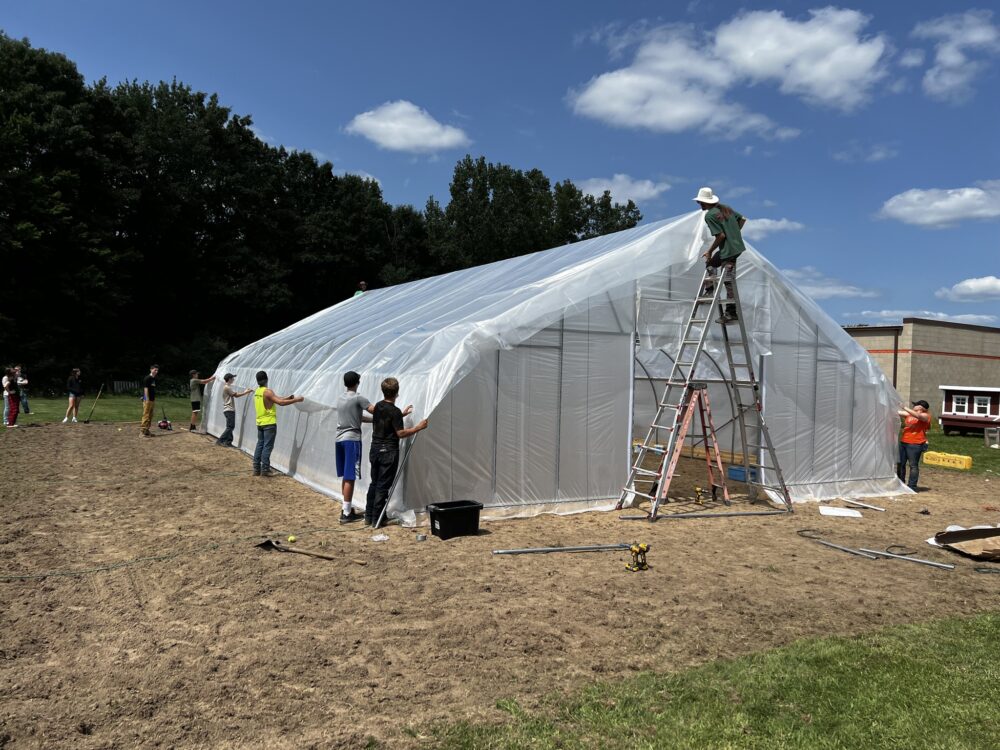
The top of the hoop house frame is covered in plastic. Photo provided by teacher Bob Richards
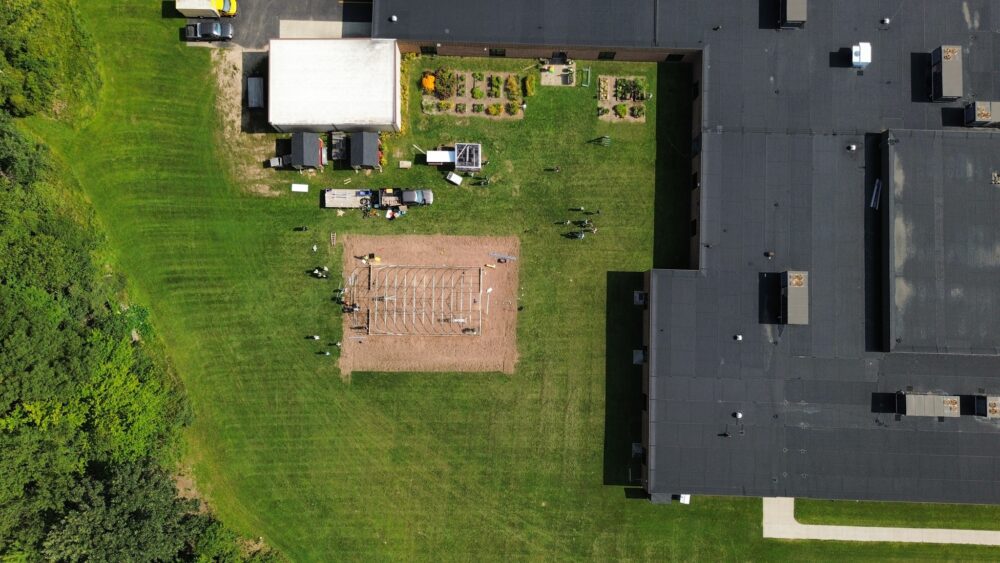
Student and licensed pilot Jacob Broesamle flies a drone above the area to capture pictures of the partially constructed hoop house frame. Photo by Jacob Broesamle


